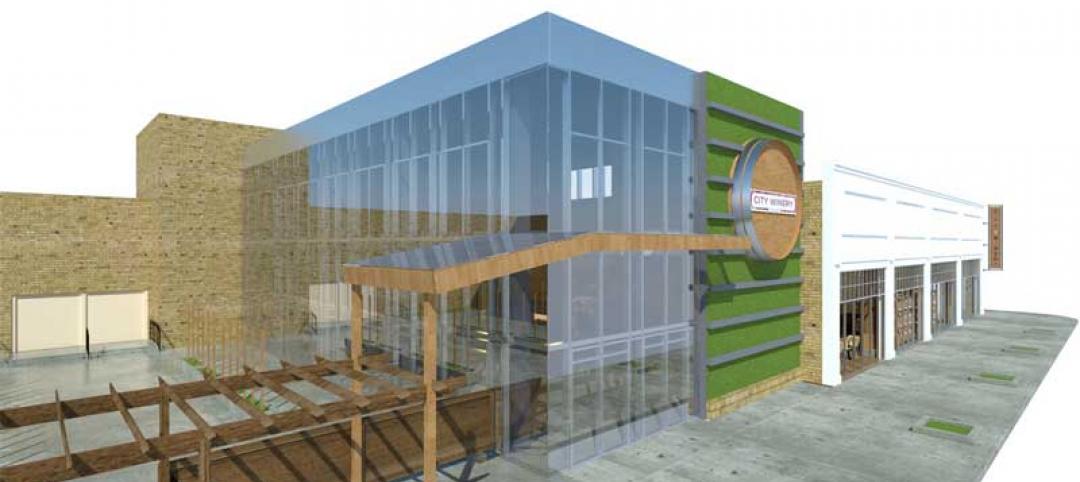Whether you agree with Frank Lloyd Wright’s definition of good architecture or not, the late architect was never anything less than resolute and unswerving in his convictions. If ever you needed evidence of this, look no further than PBS Digital and Quoted Studios’ Blank on Blank animated short featuring excerpts from an interview between Wright and Mike Wallace in 1957.
In the short six-minute video, Wright calls architecture of the past 500 years “phony,” says, if given another 15 years to work, he would rebuild the country and change the nation, and casts aspersions on the New York City skyline calling it a “great monument to money and greed.” Wright certainly doesn’t hold anything back in this interview, but before anyone gets any ideas to call him arrogant, he has a few choice words for you too. “I think any man who really has faith in himself will be dubbed arrogant by his fellows,” Wright says. “I think that’s what happened to me.”
Wright’s interview on The Mike Wallace Show took place when he was 90 years old, just two years before his death. At this point in his life, Wright had designed over 1,000 buildings and had seen over 500 of them come to fruition, but even with so much work under his belt, Father Time was the only thing slowing the 90-year-old architect down and hindering him from accomplishing more.
Returning to his idea of changing the country, Wallace quoted Wright as previously saying, “If I had another 15 years to work, I could rebuild this entire country. I could change the nation.” Wright confirmed that he said this saying, “It’s amazing what I could do for this country. I wouldn’t start to change so much the way we live, as what we live in and how we live in it.”
Wright wasn’t the only architect featured in a Blank on Blank video. A 1965 interview between architect Buckminster Fuller and Studs Terkel was also turned into an episode.
Fuller’s interview isn’t quite as provocative as Wright’s, but he shares some of the same ideas as Wright regarding the current state of architecture. “I saw that the way in which we built was very, very ignorant,” Fuller says.
The rest of the video gives some insight into how and why Fuller developed his architectural style and philosophy.
Both videos act as windows into the minds and imaginations of two architects with very unique and very ambitious ideas for what architecture could and should be.
According to Quoted Studios, its purpose in creating these animated videos from interviews, such as this one featuring Wright and Wallace, is to unlock hidden stories. “Whether they’re interviews sitting on a journalist’s tapes or in a major archive, recordings buried in a media brand’s archives, or the yet to be heard stories within an organization, we transform raw, intimate storytelling into culturally resonant digital content,” the company writes on its website.
Other notable figures featured in the Blank on Blank series include Rod Serling, Ayn Rand, Ray Bradbury, and Carl Sagan.
Related Stories
| Apr 23, 2012
Vegas’ CityCenter called financial ‘black hole’
Two and a half years ago, stockholders filed six lawsuits after the stock price fell from $99.75 on Oct. 9, 2007, to $1.89 on March 5, 2009. Bondholders sued over similar steep losses.
| Apr 23, 2012
Innovative engineering behind BIG’s Vancouver Tower
Buro Happold’s structural design supports the top-heavy, complex building in a high seismic zone; engineers are using BIM technology to design a concrete structure with post-tensioned walls.
| Apr 23, 2012
AAMA releases updated specification for anodized aluminum
AAMA 611-12 describes test procedures and requirements for high performance (Class I) and commercial (Class II) architectural quality aluminum oxide coatings applied to aluminum extrusions and panels for architectural products.
| Apr 23, 2012
Thornton Tomasetti project wins AISC Merit Award
Thornton Tomasetti provided structural design services through construction administration to architect HOK for the 1.6-million-sf tower and tiara structure, which comprises 15 steel tube arches spanning approximately 158 feet horizontally and 130 feet vertically from the top of the main building roof.
| Apr 23, 2012
Construction underway on City Winery Chicago
The Building Team is maintaining the old brick and timber construction, while adding 5,000-sf of new construction in the form of a two-story addition within the site’s existing courtyard.
| Apr 20, 2012
McCarthy completes Santa Barbara Cottage Hospital Replacement Facility
The new hospital’s architectural design combines traditional Santa Barbara Spanish colonial architecture with 21st century medical conveniences highlighted by a therapeutic and sustainable atmosphere.
| Apr 20, 2012
Century-old courthouse renovated for Delaware law firm offices
To account for future expansion, Francis Cauffman developed a plan to accommodate the addition of an 8-story tower to the building.
| Apr 20, 2012
RCMA and Oak Ridge National Laboratory to host International Roof Coatings Conference
The International Roof Coatings Conference will feature keynote speakers Marc LaFrance of the U.S. Department of Energy, and Art Rosenfeld of the Lawrence Berkeley National Laboratory.
| Apr 20, 2012
Shawmut completes Yard House Restaurant in Boston
12,000-sf restaurant marks new addition to Boston’s Fenway neighborhood.
| Apr 20, 2012
Registration open for Solar Power International 2012 in Orlando
President Bill Clinton to deliver keynote address at ?largest solar energy event in the Americas.

















